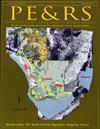基于高光谱数据的城市目标检测算法的比较评估
IF 2
4区 地球科学
Q4 GEOGRAPHY, PHYSICAL
引用次数: 0
摘要
高光谱数据为利用其光谱带内的光谱和空间内容宝藏提供了更好的机会。高光谱数据越来越多地被用于探索城市化水平,因为它们能够捕捉现代城市景观提供的光谱变化。数据和算法是硬币的两面:当数据捕捉变化时,算法提供合适的方法来提取相关信息。文献报道了从任何给定数据中提取城市信息的各种算法,其精度各不相同。本文旨在探索二分类器的目标检测方法,以提取某些特征。道路和屋顶是任何城市场景中最常见的特征。这些实验是在来自印度乌代普尔地区的AVIRIS-NG高光谱数据子集上进行的,以道路和屋顶为目标。从文献调查和我们之前的经验中确定了四类目标检测算法——距离测量、基于角度的测量、信息测量和机器学习测量——然后是性能评估。文章还简要介绍了算法的分类;探索了马氏角度等方法,该方法已被报道为有效地提取城市目标;并探索新的机器学习算法来提高准确性。这项工作可能有助于城市规划、可持续发展以及其他各种与城市化有关的政府和非政府努力。本文章由计算机程序翻译,如有差异,请以英文原文为准。
Comparative Assessment of Target-Detection Algorithms for Urban Targets Using Hyperspectral Data
Hyperspectral data present better opportunities to exploit the treasure of spectral and spatial content that lies within their spectral bands. Hyperspectral data are increasingly being considered for exploring levels of urbanization, due to their capability to capture the spectral variability
that a modern urban landscape offers. Data and algorithms are two sides of a coin: while the data capture the variations, the algorithms provide suitable methods to extract relevant information. The literature reports a variety of algorithms for extraction of urban information from any given
data, with varying accuracies. This article aims to explore the binary-classifier approach to target detection to extract certain features. Roads and roofs are the most common features present in any urban scene. These experiments were conducted on a subset of AVIRIS-NG hyperspectral data
from the Udaipur region of India, with roads and roofs as targets. Four categories of target-detection algorithms are identified from a literature survey and our previous experience—distance measures, angle-based measures, information measures, and machine-learning measures—followed
by performance evaluation. The article also presents a brief taxonomy of algorithms; explores methods such as the Mahalanobis angle, which has been reported to be effective for extraction of urban targets; and explores newer machine-learning algorithms to increase accuracy. This work is likely
to aid in city planning, sustainable development, and various other governmental and nongovernmental efforts related to urbanization.
求助全文
通过发布文献求助,成功后即可免费获取论文全文。
去求助
来源期刊

Photogrammetric Engineering and Remote Sensing
地学-成像科学与照相技术
CiteScore
1.70
自引率
15.40%
发文量
89
审稿时长
9 months
期刊介绍:
Photogrammetric Engineering & Remote Sensing commonly referred to as PE&RS, is the official journal of imaging and geospatial information science and technology. Included in the journal on a regular basis are highlight articles such as the popular columns “Grids & Datums” and “Mapping Matters” and peer reviewed technical papers.
We publish thousands of documents, reports, codes, and informational articles in and about the industries relating to Geospatial Sciences, Remote Sensing, Photogrammetry and other imaging sciences.
 求助内容:
求助内容: 应助结果提醒方式:
应助结果提醒方式:


